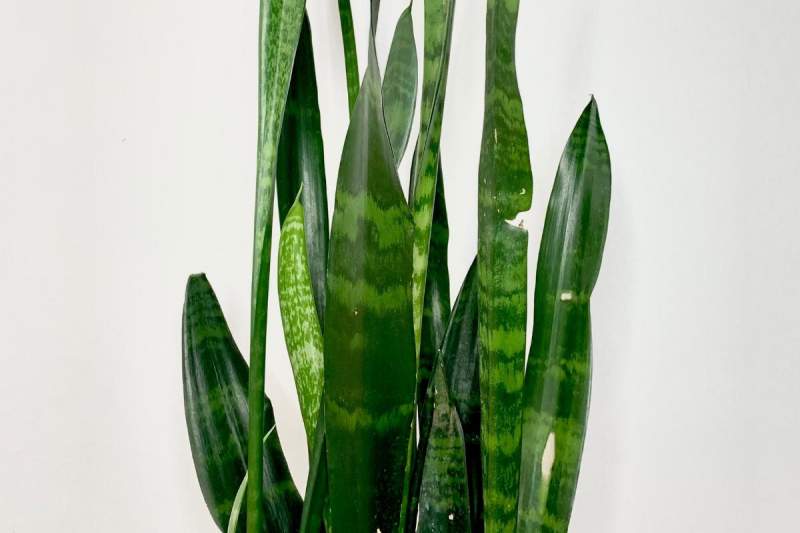The 25-Second Trick For Snake Plant Leaves Turning Yellow
The Snake Plant Leaves Turning Yellow Ideas
Table of ContentsThe 45-Second Trick For Snake Plant Leaves Turning YellowSnake Plant Leaves Turning Yellow Fundamentals ExplainedThe Greatest Guide To Snake Plant Leaves Turning YellowThe Snake Plant Leaves Turning Yellow IdeasThe Buzz on Snake Plant Leaves Turning Yellow
The court is still out on just how reliable it is in cleansing the air, yet I still have one in almost every space This special plant is a great starter plant and with its very easy treatment, you can't fail with it! In this message, I wanted to share some pointers on taking care of your sansevieria.Snake plants Enjoy well draining dirt. If the plant stays damp for also long, the origins can rot and eventually, your plant will certainly pass away.
These plants are very similar to cacti when it comes to their treatment. They don't such as to be being in water for also long. One of the main things that will certainly maintain your plant from root rot is well draining pipes soil. You can get a premade cactus/succulent soil (it's a mix of sand and dirt) and many yard shops will certainly bring it.
This will make your plant susceptible to bugs or other organisms found outdoors. I did this once and learned my lesson really promptly and brought in extra little pests that were unsafe to my plant. For pots, I love terracotta pots. These are the red clay ones that you can find practically anywhere.
The Best Guide To Snake Plant Leaves Turning Yellow
Terra cotta pots aid with staying clear of origin rot. The plant will dry a lot quicker in a terracotta pot since the clay wick's water is from the dirt. I have some plants in decorative earthenware pots that are not terracotta as well, however they all have a drainage hole at the bottom.
I like to get a pot that offers my new plant about 2 inches of development space around the entire size of the pot. This offers the plant area to grow however it's still a bit snug. Replanting your sansevieria in as well huge of a pot implies much more soil, causing even more time to dry, which can bring about root rot.
If you have a pot on a wood flooring or wood surface, simply see to it you put a plate or impermeable material under the pot to protect the pot from ruining your surface. The fantastic point about sansevieria is that it can manage diverse lights scenarios. The plant will grow much better in brilliant light (near a home window in your home), however it can handle a darker edge in your home.
It's impressive to see this plant grow in what shows up to be poor lights conditions. It genuinely is an unbelievably adaptable plant!
Not known Incorrect Statements About Snake Plant Leaves Turning Yellow
I discover the even more I fail to remember concerning my serpent plant, the better! Only water when the soil is completely dry.
If there is a little dampness in the dirt, after that I will check it once again in a week. How your plant holds dampness will depend on where you live. If you live in a clothes dryer climate, after that it will certainly dry quicker, or if you stay in a damp environment, then it will certainly hold water much longer.
Watering on wet days keeps informative post my plants soggy and they take longer to dry out. Or, if there is rainfall in the forecast, I will certainly wait to water till the rain is over. I sprinkle my sansevierias every 2-3 weeks. In winter, I lessen watering and water concerning every 4 weeks.
I don't soak my plants with water due to the fact that of the hazard of root rot. I prefer to under water than over water them. Sansevierias do not like their leaves to be wet, so when you water, just pour the water on the dirt and try to prevent obtaining any kind of water on the fallen leaves.
Some Known Details About Snake Plant Leaves Turning Yellow

Fluoride and chlorine can accumulate in your sansevieria, so this approach of leaving your water out will pay off over time. Making use of filtered water or gathered water is an excellent choice also! Cleaning the leaves is a wonderful behavior that your sansevieria will certainly thank you for.

As the roots make their means out and expand, they will certainly require constant call with the soil, so do not allow your plant dry out way too much when you are attempting to proliferate. I'll look at my freshly multiplied leaves and give them even more focus than common. If the dirt has ended up being bone completely dry, then I will certainly provide the original source a good take in water.
What Does Snake Plant Leaves Turning Yellow Do?
In addition to being unbelievably simple to expand, serpent plants have a number of health and wellness advantages, consisting useful site of filtering interior air, eliminating hazardous toxins, and enhancing psychological health. Lots of house plants are purposefully positioned for decor and to keep feng shui.
:max_bytes(150000):strip_icc()/snake-plant-care-overview-1902772-04-d3990a1d0e1d4202a824e929abb12fc1-349b52d646f04f31962707a703b94298.jpeg)
Their leaves include a poison that can trigger swelling and pins and needles on the tongue if eaten in huge doses. It's important to keep this plant away from youngsters and pets that are susceptible to munching. The snake plant, commonly described as mother-in-law's tongue, is a resilient delicious that can grow anywhere in between 6 inches to a number of feet.
What's one-of-a-kind about this particular plant is that it's one of minority plants that can convert co2 (CO2) into oxygen at evening. This high quality makes it an excellent plant for bedroom decor, considering that it can aid control healthy air flow - Snake Plant Leaves Turning Yellow. Snake plants are additionally understood for their capacity to aid get rid of poisonous air pollutants